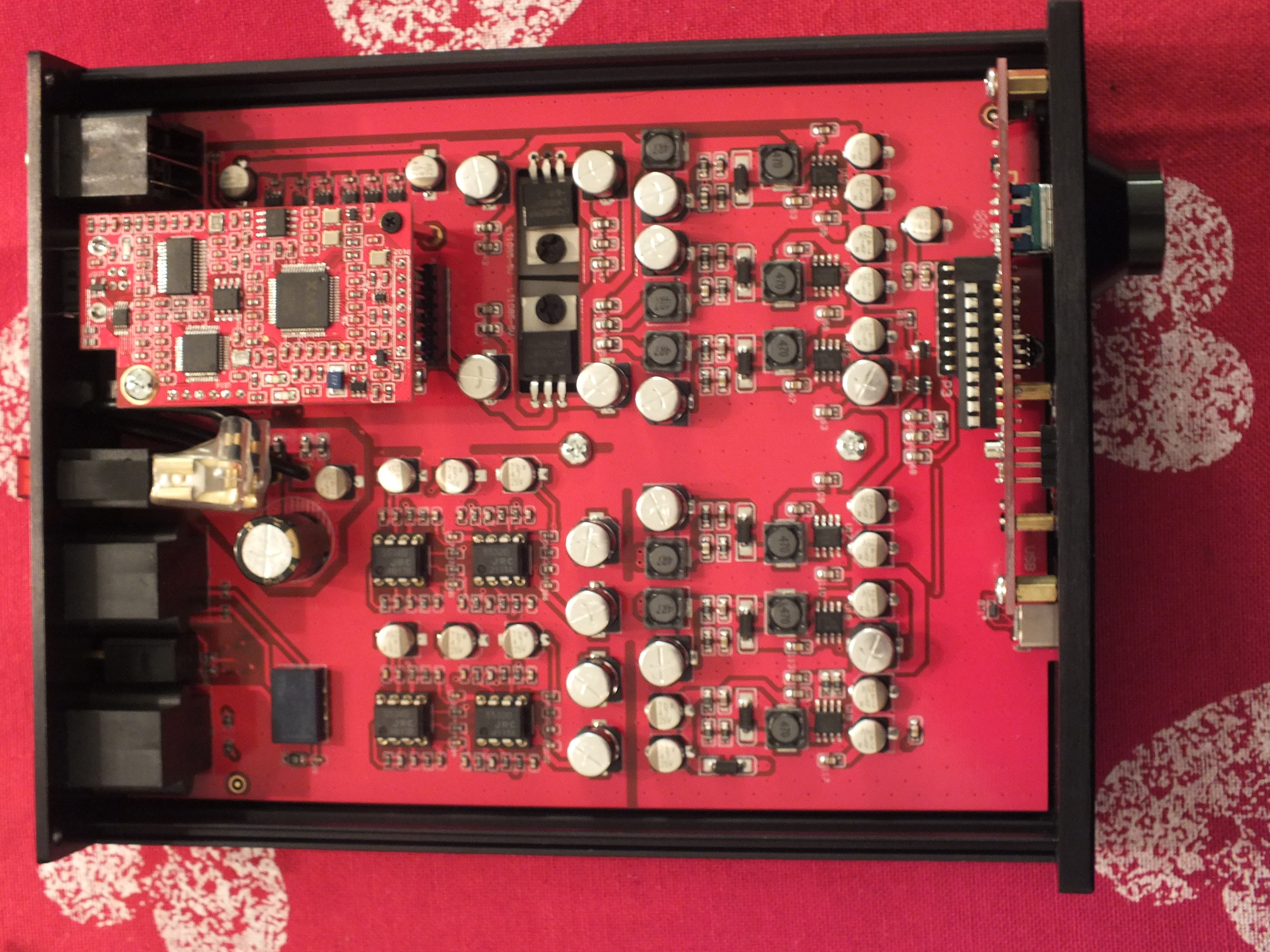raoultrifan
Headphoneus Supremus
@dangab , many thanks for the inside pics!
What I can see inside, but hope you can add additional thoughts:
- Different boost converters (regulators) than used to be inside PLAY: XL6007E1 (from XLSEMI) and TPS725 (from Texas Instruments).
- Power regulators are smaller package, so less EMI/RFI generated.
- Also, the Schottky diodes, after the inductors that comes from the regulators, seems to have a smaller size too.
- Regulators are placed at opposite side as it used to be in PLAY or PLAYMATE, nearby the volume control card, instead of the DAC & transport card, so this will minimise any possible noises due to the EMI/RFI of the boost-converters (the 6 regulators themselves).
- LT1085 linear regulators to power the digital parts (transport and DAC chip).
- several decoupling capacitors around each opamp.
- DAC chip ES9038Q2M (or C2M) seems to be about one inch closer to the black connecter that comes from the upper transport board, in compare with PLAY (shorter PCB traces are better, to minimise any possible noises).
- I was able to count 7 linear power regulators soldered nearby the DAC chip, with several capacitors around, quite impressive!
- Ground plane fills the entire upper layer of the board, again...to minimise any possible EMI/RFI interferences.
Given the newer layout that, at least to my eyes, seem to be improved in regard with background noise and dynamics, can anyone test the SWING with really sensitive IEMs, please? Basically, volume to the minimum and connect the IEMs should be OK for this test, just need to listen for any background noise in quiet room (at night would be better, if possible). Thanks!
What I can see inside, but hope you can add additional thoughts:
- Different boost converters (regulators) than used to be inside PLAY: XL6007E1 (from XLSEMI) and TPS725 (from Texas Instruments).
- Power regulators are smaller package, so less EMI/RFI generated.
- Also, the Schottky diodes, after the inductors that comes from the regulators, seems to have a smaller size too.
- Regulators are placed at opposite side as it used to be in PLAY or PLAYMATE, nearby the volume control card, instead of the DAC & transport card, so this will minimise any possible noises due to the EMI/RFI of the boost-converters (the 6 regulators themselves).
- LT1085 linear regulators to power the digital parts (transport and DAC chip).
- several decoupling capacitors around each opamp.
- DAC chip ES9038Q2M (or C2M) seems to be about one inch closer to the black connecter that comes from the upper transport board, in compare with PLAY (shorter PCB traces are better, to minimise any possible noises).
- I was able to count 7 linear power regulators soldered nearby the DAC chip, with several capacitors around, quite impressive!
- Ground plane fills the entire upper layer of the board, again...to minimise any possible EMI/RFI interferences.
Given the newer layout that, at least to my eyes, seem to be improved in regard with background noise and dynamics, can anyone test the SWING with really sensitive IEMs, please? Basically, volume to the minimum and connect the IEMs should be OK for this test, just need to listen for any background noise in quiet room (at night would be better, if possible). Thanks!


























 .
. Just look for duals and you can't miss it.
Just look for duals and you can't miss it.